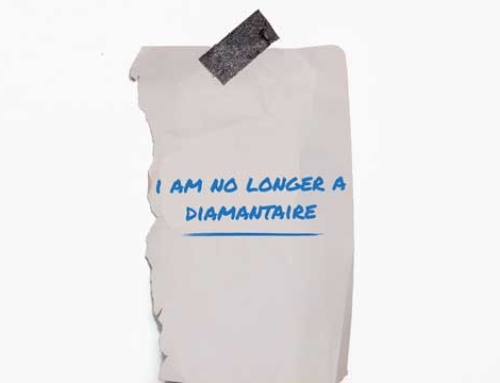Image: Aether ©
Each carat produced by Aether removes 20 tons of greenhouse gas from the sky, entrepreneurs say.
The dawn of the Biden administration and its focus on climate change is attracting more industries to a solution that was, until recently, thought to be more trouble than it’s worth: the direct removal of carbon dioxide from the atmosphere.
The idea of collecting CO2 from the sky and trapping it in valuable products before it can warm the Earth is a seductive marketing strategy. Especially for an industry that sells precious items that last “forever.”
That, in a nutshell, describes the global diamond trade.
Composed of gem companies valued at roughly $76 billion, the industry has weathered a turbulent 150-year history rife with allegations of environmental and human degradation.
Now, two companies are selling diamonds made in a laboratory from CO2 that once circled the Earth.
The sales pitch can be stunning. As Ryan Shearman, the founder and CEO of a New York-based company called Aether, recently explained to a reporter for Vogue magazine: Each carat of a diamond removes 20 tons of CO2. That, he said, is more invisible gas than the average person produces in a year.
With the purchase of a 2-carat diamond, Shearman pointed out, “you’re essentially offsetting 2 ½ years of your life.”
It can take Mother Nature as long as a billion years to make diamonds, which are formed in rocks. But as Shearman explained in an interview with E&E News, he has developed a patent-pending process that can make a batch of diamonds in a laboratory in four weeks.
Unlike other laboratory-made diamonds, his process starts with CO2 removed from the air. The gas undergoes a chemical reaction where it is subjected to high pressure and extremely high temperatures. All of this is created using solar, wind or hydraulic power.
Or, as Shearman sometimes puts it, “we’re committed to the unprecedented modern alchemy of turning air pollution into precious stones.”
Aether has been selling its diamonds since the beginning of the year at prices ranging from $7,000 for a ring to around $40,000 for earrings with sparkling stone arrangements.
“We have quite a large waitlist now,” he said.
Aether has a competitor, a British company called Skydiamond founded by Dale Vince, an entrepreneur and self-styled environmentalist who says he spent five years researching how to make what he calls the world’s first “zero-impact diamonds.”
“The way the market has been built up, it has so many different players that it’s quite easy to lose track of where the diamonds come from,” said Shearman, the CEO of Aether, during his interview with E&E News.
“The major challenge for the [natural diamond] industry is that our manufacturing process completely sidesteps this process. We get our carbon from the air,” he said.
Shearman’s competitor, Vince of Skydiamond, sums it up like this in his ads: “All the bling … none of the sting.”
Climeworks, a Zurich-based company that extracts CO2 from the air using waste heat from a small town’s incinerator, says it sells some gas to Aether.
According to Shearman, the CO2 is sent to a facility in Europe where it is converted into methane. That is sent to a reactor in Chicago, where pressure and heat fueled by renewable energy convert it into diamonds.
Climeworks has gone on to make a business out of accepting donations of CO2 from various sources and, for a fee, injecting it into a rock formation near a power plant in Iceland. Once it’s underground, the gas is mixed with water, and it will turn into stone in two years. The company is building a pilot plant called Orca that is designed to bury 4,000 tons of CO2 each year.
So far, over 3,000 companies and individuals from 52 countries have made contributions in exchange for a certificate showing that they have permanently stored CO2 underground.
In January, De Beers, the company that pioneered the global explosion of the diamond business, bought a substantial advertisement in The New York Times suggesting it might “reset” the industry by adopting 12 new sustainability and ethics goals.
One of the goals is capturing more CO2 emissions.
De Beers has a new program called “CarbonVault,” which will use the plentiful supply of rocks in the mines it owns around Kimberley to store CO2. The company—still large, but no longer the monopoly it once was—has formed a new task force to figure out how to use “physical, chemical and biological methods to accelerate” the rock-forming process. It aims to have “an industrial impact.”
The project is now heading toward field testing, Alison Shaw, a senior geochemist leading the project for De Beers, explained in an advertisement.
Forests of trees that store carbon can burn in wildfires, and underground reservoirs used to dispose of trapped carbon might leak, she said. But “we know that carbonate minerals are stable over hundreds of thousands of years.”







